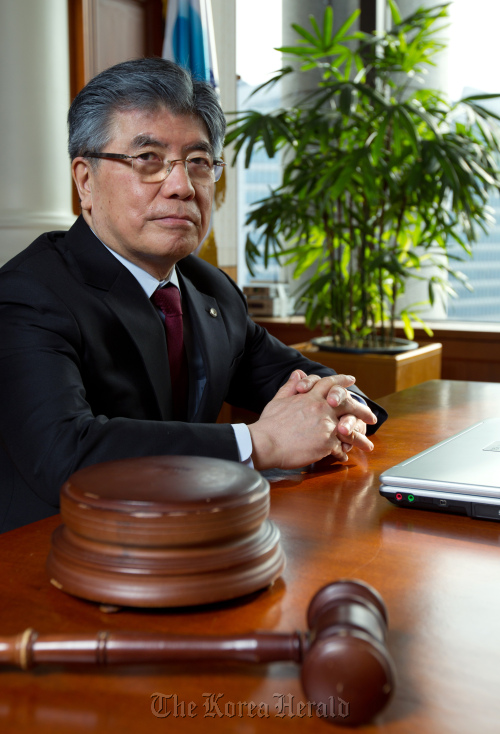BOK governor brings changes during a turbulent period for Korean economy
Bank of Korea Gov. Kim Choong-soo enters the third year of his term on April 1 amid a mixed assessment of the changes he has brought to the Korean economy and the central bank in particular.
Kim, who formerly served as a presidential economic advisor, spearheaded a series of reforms at the top bank such as strengthening its research function and placing younger professionals at key posts. During the early period of his term, Kim pleasantly surprised the market by carrying out rate hikes to combat inflation.

|
Bank of Korea Governor Kim Choong-soo. (Bloomberg) |
He also made it a rule to disclose whether the rate-setting decision was unanimous or not at the Monetary Policy Committee, a move that helped improve the bank’s transparency.
For all the positive reviews of such changes, however, Kim is now struggling to fend off attacks over the country’s stubbornly high inflation rate. Critics blame him for missing the chance to raise the benchmark rate last year, a step that might have helped keep inflationary pressure under control.
Since Kim took the helm, the central bank raised the rates by 1.25 percentage point in five steps from July 2010 through June 2011. At issue is the inaction that set in from July last year. Some analysts believe that Kim should have pushed ahead with a rate hike last year as a proactive move against inflation growth. The country’s consumer prices rose 4.0 percent last year, hitting the upper ceiling of the bank’s target band.
The negative view of the bank’s rate-setting policy is spreading further as the BOK seems to have its hands tied due to growth risks at home and the eurozone debt woes abroad. Early in March, the Bank of Korea kept the interest rate at 3.25 percent for a ninth month in a row, as widely expected.
The media’s lack of interest in the BOK’s predictable rate decision was evident, with many of the local newspaper not treating it as front-page news. Furthermore, economists predicted that the central bank would likely keep the rate unchanged for the rest of the year.
As far as economic indicators are concerned, Kim steered the central bank during a turbulent period in which Korea hit one crisis after another. When Kim started his term two years ago, the Korean economy was growing at 6.2 percent a year, recovering quickly from the financial crisis that struck in 2008. Exports were robust, while domestic consumption remained solid.
In 2011, everything changed. The eurozone fiscal crisis undercut the global economy, dealing a serious blow to the Korean economy, which depends greatly on exports. The slump-laden construction sector, sluggish consumption and shrinking facility investment sent the economic growth rate slowing to 3.6 percent, undershooting the BOK projection of 3.8 percent growth.
While the macro indicators are not that favorable, money market figures suggest that his term is not without strengths. The KOSPI index stood at 2,037.04 points as of March 27, up 20.4 percent from 1,692.85 on March 31, 2010. The local currency weakened slightly to 1,134.20 from 1,130.30 during the same period.
By Yang Sung-jin (
insight@heraldcorp.com)







